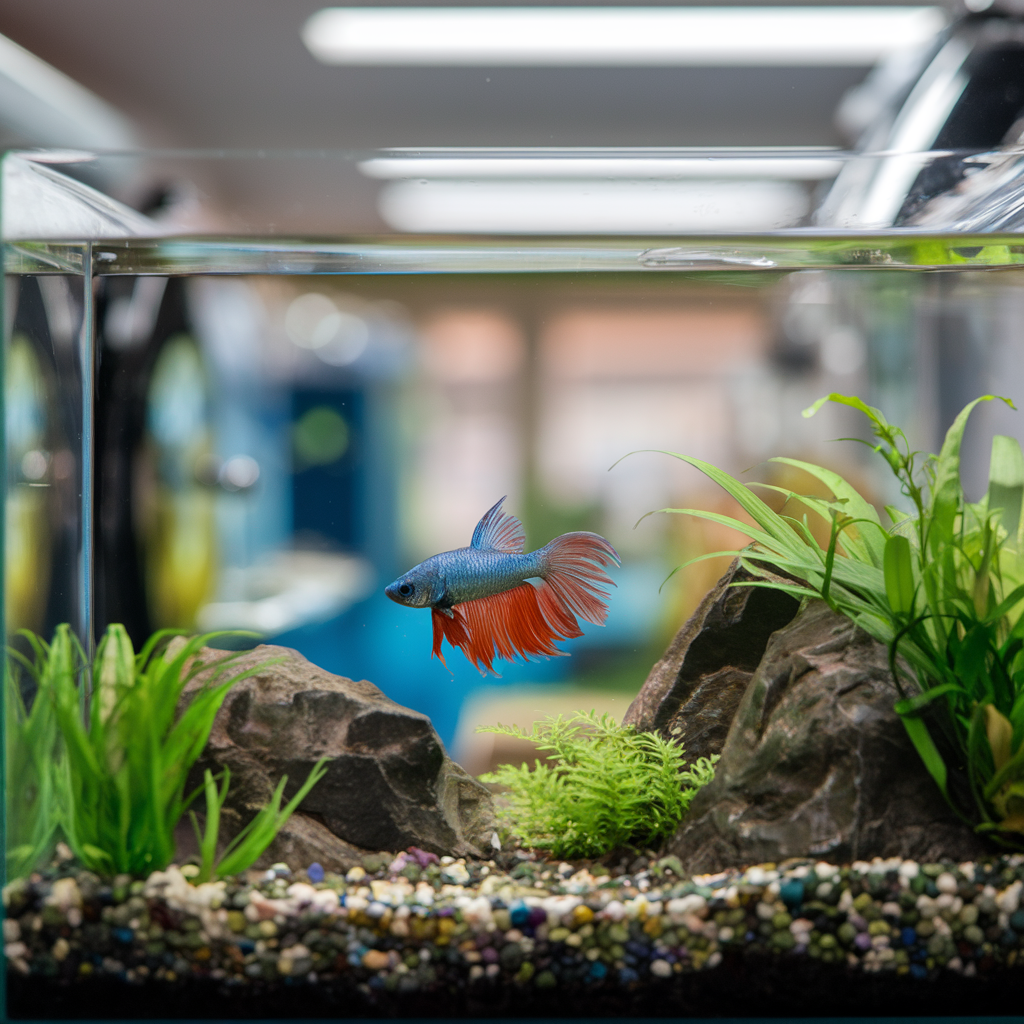The Beauty of Bettas: A Guide to Keeping Betta Fish as Pets

Betta fish, also known as Siamese fighting fish, are among the most popular and visually stunning freshwater fish. With their vibrant colors, flowing fins, and curious personalities, Bettas make a striking addition to any aquarium. However, caring for these beautiful fish requires more than just a tank and water. Here’s everything you need to know about keeping Betta fish as pets and ensuring they thrive in your care.
Why Betta Fish Make Great Pets
- Vibrant Colors
- Betta fish come in a wide variety of colors and fin types, from deep reds and blues to iridescent greens and purples. Their vivid appearance makes them a popular choice for both novice and experienced fish keepers.
- Low Maintenance
- Compared to other pets, Betta fish require relatively low maintenance. Once their tank is properly set up, they don’t need daily attention, making them ideal for busy individuals or those new to fish keeping.
- Personality
- Despite their small size, Betta fish have big personalities. They are curious and often interact with their owners, especially during feeding time. Some even recognize their owners and respond to their presence.
- Space-Saving
- Bettas don’t require large tanks to thrive, which makes them a great option for people with limited space. A well-maintained small tank can provide a comfortable home for a Betta fish.
Choosing the Right Betta Fish
When selecting a Betta fish, there are a few factors to consider to ensure you choose a healthy and happy fish.
- Look for Bright Colors
- A healthy Betta will have vibrant, bright colors. Avoid fish that appear dull or have faded scales, as this could be a sign of stress or illness.
- Check Fin Condition
- Bettas are known for their beautiful fins, which should be intact and free from tears or damage. Fin rot is a common issue in Bettas, so make sure the fins look healthy.
- Observe Behavior
- Healthy Betta fish are active and curious. If a Betta seems lethargic, stays at the bottom of the tank, or shows signs of labored breathing, it might not be in the best health.
- Consider Fin Types
- Betta fish come in various fin types, such as veil tail, crown tail, and half-moon. Each type has its own unique look, so choose the one that appeals to you the most.
Setting Up a Betta-Friendly Environment
- Tank Size and Setup
- While Bettas can survive in small bowls, it’s best to provide them with a tank of at least 5 gallons. A larger tank ensures better water quality and gives the fish more room to swim. Include a gentle filter and a heater to maintain a consistent water temperature between 76-82°F (24-28°C).
- Water Quality
- Betta fish are sensitive to water conditions, so regular water changes are crucial. Use a water conditioner to remove chlorine and other harmful chemicals from tap water. Testing the water regularly for pH, ammonia, and nitrite levels helps maintain a healthy environment.
- Decorations and Plants
- Bettas appreciate a well-decorated tank with plenty of hiding spots. Silk plants, live plants, and smooth decorations provide shelter and create a more natural environment. Avoid sharp objects that could tear their delicate fins.
- Lighting
- Bettas do not require strong lighting, but a soft, ambient light will help them show off their colors. Ensure that the tank is not exposed to direct sunlight, which can lead to overheating and algae growth.
Daily Care and Maintenance
- Feeding
- Bettas are carnivores and thrive on a diet of high-protein foods. Feed them Betta-specific pellets or flakes, supplemented with occasional treats like freeze-dried or live brine shrimp and bloodworms. Feed small amounts once or twice a day, only what the fish can consume within a few minutes to prevent overfeeding.
- Water Changes
- Regular water changes are essential for keeping the tank clean and the Betta healthy. Change 25-50% of the water weekly, depending on tank size and filtration, to remove waste and maintain water quality.
- Monitoring Health
- Keep an eye on your Betta’s behavior and appearance. A healthy Betta will be active, with vibrant colors and intact fins. If you notice signs of illness, such as clamped fins, color fading, or white spots, take action quickly to treat the issue.
- Avoiding Tank Mates
- Bettas are territorial and often aggressive toward other fish, especially other male Bettas. If you want to include tank mates, choose peaceful, small species like snails or shrimp that won’t provoke the Betta.
Fun Facts About Betta Fish
- Bubble Nests: Male Betta fish build bubble nests at the water’s surface as part of their breeding behavior. This is a sign that the fish is healthy and content in its environment.
- Labyrinth Organ: Bettas have a special organ called the labyrinth that allows them to breathe air from the surface, which is why they can survive in low-oxygen environments.
- Cultural Symbol: In their native Southeast Asia, Betta fish have been bred for hundreds of years, often used in fighting competitions. Today, they are loved for their beauty and kept as ornamental fish worldwide.
Conclusion
Betta fish are more than just decorative additions to your home; they are interactive and fascinating pets that can bring a sense of tranquility and beauty to your living space. By providing the right environment, proper care, and attention, you can ensure your Betta fish lives a healthy and vibrant life. Embrace the joy of Betta fish keeping, and enjoy the peaceful companionship of these magnificent creatures.



